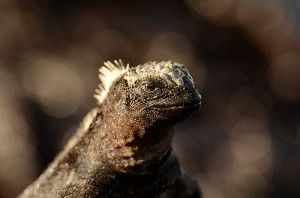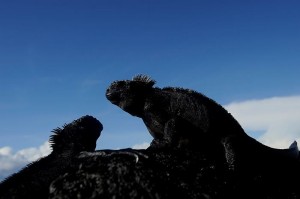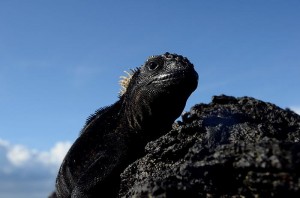I led two big photo trips in March and April, to Botswana and Ecuador. Both times I took the same main kit of photo gear. Which means I think I’ve found the perfect travel combination of cameras, lenses and accessories. A big part of that success is because the lenses behave differently on the different cameras.
Any time someone asks me for recommendations on cameras, lenses or other gear, my first question is, “What do you want to do?” In both of these cases, that answer was primarily wildlife photography, with a bit of landscape and people photography mixed in. For each trip, weight was also an issue, so the less brought the better. And, I needed to shoot video, which meant a bit more planning than usual. The gear I took to Botswana worked out

Nikon D7000, 70-200mm lens, the “crop” factor of the DX sensor in the D7000 gave me tighter framing than the FX sensor in the D700. Photo copyright Reed Hoffmann.
so well I took the same kit to Ecuador and the Galapagos Islands.
I always start with the cameras, and go from there. I say “cameras” because any trip that’s worth going on, you should have at least two cameras. In case of failure, loss, damage, you name it. You don’t want to be without a camera. And since Nikon came out with their FX bodies, you’ll almost always find me with both a DX and FX body. In this case, that meant Nikon’s D7000 and D700. I like that kind of combination because the DX camera (D7000) gives me a crop factor, making my telephoto lenses “feel” longer, and the D700’s amazing low-light photography can be a real life saver. The D7000, with full HD video capability, would serve double-duty as my video camera too.
For lenses, since wildlife was a big part of each trip, I went for my
trusty Nikkor 200-400 f/4. It’s an amazing lens, and the zoom is great for those situations where you can’t move closer/further to get the framing you want. It’s a pricey lens, and if I didn’t have it, I’d bring either the 80-400mm f/4.5-5.6 or the 70-300mm f/4.5-5.6. The mid-range is covered by my Nikkor 70-200mm f/2.8, and the wide with the fairly new 16-35mm f/4. Because of the crop factor of the DX sensor in the D7000 (1.5X), any lens on that camera gives a narrower angle of view than if mounted on the D700. That fact made those three lenses feel more like six lenses! So…
D700 – 200-400mm.
D7000 – 200-400mm X 1.5, equals an angle of view of 300-600mm.
D700 – 70-200mm.
D7000 – 70-200mm X 1.5 equals an angle of view of 105-300mm.
D700 – 16-35mm.
D7000 – 16-35 X 1.5 equals and angle of view of 24-52mm.
This meant I could get more or less reach out of a lens by changing the body it was mounted to! These photos are from one morning when I did just that. We were photographing some iguanas who had just come out to the rocks. I couldn’t get closer to the first one because of some rocks, so I switched the 70-200 (with the TC-14e teleconverter) from the D700 (FX body) to the D7000 (DX body). Just doing that gave me tighter framing. Then I wanted to get a wide-angle shot up close, to let the viewer go eye-to-eye with the iguana. The problem was, as I moved closer to the iguana, it moved away from me. I was using the 16-35mm on the D700 (FX). But even zoomed out to 35mm the iguana was going to be too small in the photo. So again I switched the lens to the D7000 body (DX). With the lens at 35mm, I now had a field of view of about 52mm, which wasn’t the wide shot I hoped for, but worked out well.
I’ve spent most of my life as a photographer working within the limitations of the lenses I have with me. Now, thanks to cameras that offer different sensor sizes, those limitations aren’t quite so limiting. And I’m loving it!




